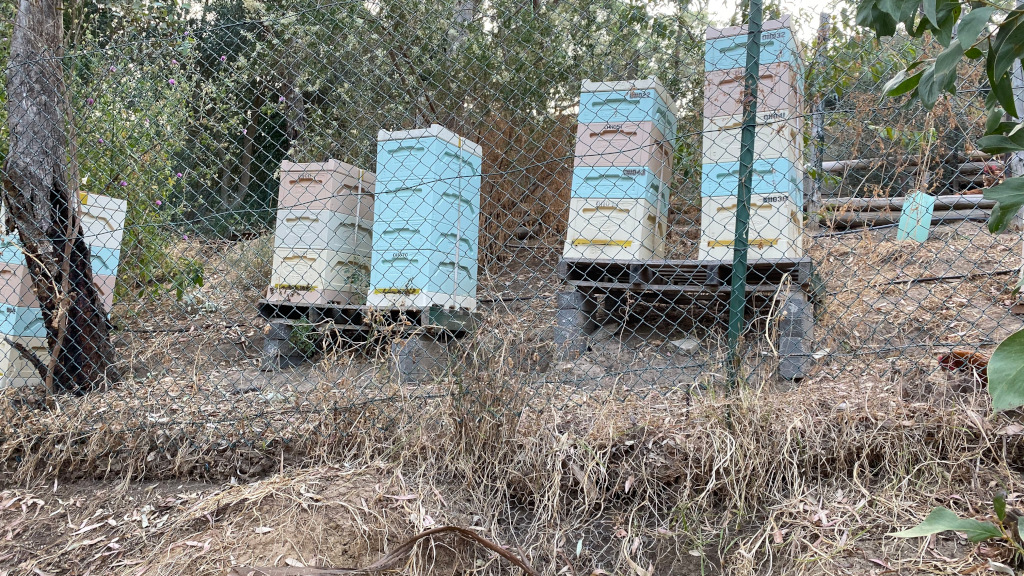Our bees forage for nectar and pollen from flowering plants within their flight range from the hive. Bees can travel up to several kilometres to collect water, pollen and nectar. Pollen is used for rearing bees, and nectar for honey production.
We have a number of apiaries in the Adelaide Hills (Mount Lofty Ranges) where native woodland eucalyptus most commonly include: E. leucoxylong (blue gum), E. ovate (black gum), E. fasciculosa (pink gum), E. viminalis (manna gum), E. woollsiana (grey box), E. camaldulensis (red gums), E baxteri (stringy bark), E. goniocalyx (long-leaved box), E odorata (peppermint box), E cosmophylla (cup gum) Other sources include Callistemon (bottlebrush) and acacias (Blackwood acacia melanoxylon), Allocasuarina muelleriana (sheok) Astroloma conostephiodes (Flame Heath). Introduced ornamentals include: Corymbia ficifolia (red-flowering gum).
The Blackwood Apiary is a fairly small apiary mainly used for Queen Bee and comb honey production. We do still produce a good quantity of honey from this apiary given the excellent range of flora available.
Bee flora in the Blackwood area includes native Australian flora and flowers, fruit trees and vegetables in domestic gardens. The native woodland flora includes: grey box, blue gum, old river red gums, cup gum, and grassy woodlands including a variety of wattles, grevillea, assorted heaths, wax flowers, peas and flowering weeds.

